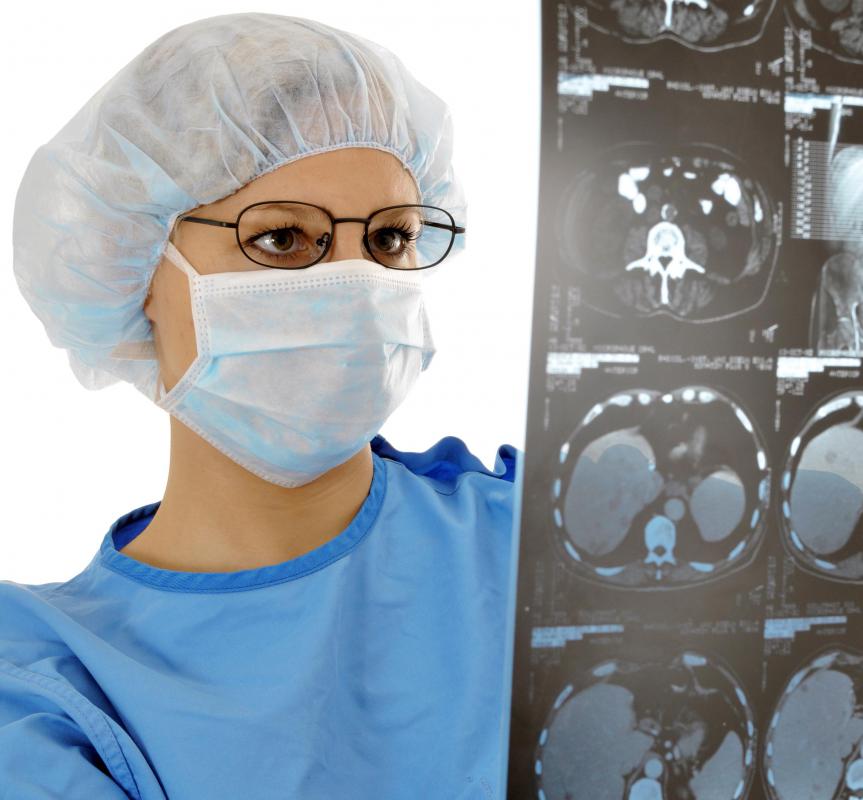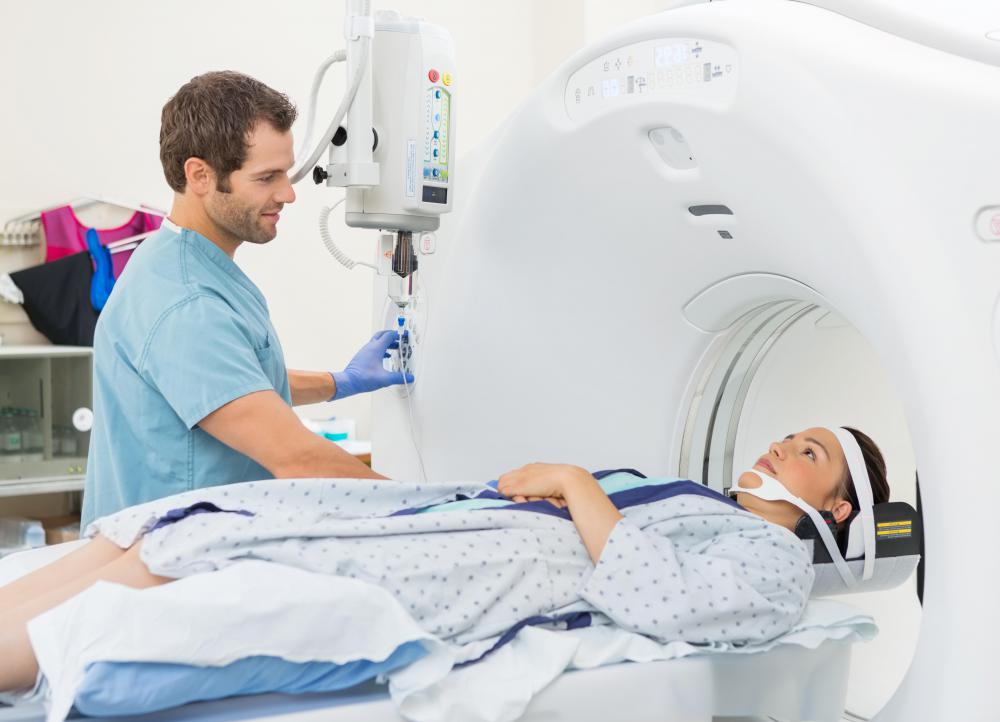At TheHealthBoard, we're committed to delivering accurate, trustworthy information. Our expert-authored content is rigorously fact-checked and sourced from credible authorities. Discover how we uphold the highest standards in providing you with reliable knowledge.
What are the Different Types of Diagnostic Equipment?
Before the advent of modern medical technology, it was often difficult for doctors to accurately diagnose conditions that could not be directly observed or inferred from symptoms. In today's hospitals, medical professionals have the luxury of diagnostic equipment that can be used to view internal structures, monitor heart and brain activity, and analyze organ functioning. There are many different types of diagnostic equipment, including magnetic resonance imaging (MRI) machines, computerized tomography (CT) scanners, electrocardiograph (ECG) devices, and ultrasound monitors.
An MRI machine is commonly used to help diagnose problems in brain functioning, tears in muscle and tendons, heart irregularities, and cancerous tumors. The machine itself resembles a large tube, where part or all of a patient's body can be inserted for testing. When turned on, a magnetic field envelops the body, causing hydrogen protons within cells to temporarily align. Another magnetic field agitates the protons and, when switched off, allows them to return to normal. A computer analyzes the activity of the protons and the time it takes them to settle in order to produce a highly accurate representation that can clearly depicts the presence of any irregularities in tissue.

CT scanners function similarly to MRI machines, though they utilize radiation instead of electromagnets to create images. A CT machine emits multiple x-rays from different directions to form an accurate two-dimensional computer image. Doctors can print the images and analyze the contrast in order to pinpoint tumors, brain injuries, and bone fractures. Another very similar piece of diagnostic equipment known as a positron emission tomography scanner is often used in conjunction with a CT machine to render three-dimensional images.

The ECG is a very valuable piece of diagnostic equipment, since it makes it possible for doctors to precisely analyze heart functioning. Electrodes are connected to the machine via small wires and attached to the chest, arms, or legs of the patient. The electrodes record and measure electrical activity in the body to represent heart activity in real-time. A computer printout, known as an electrocardiogram, can indicate irregular cardiac rhythms, muscle weakness, and tissue damage.

Ultrasound technology allows specialists to render real-time, internal video without subjecting a patient to radiation or electromagnetic fields. High frequency sound waves are sent through an area of the body, where they are reflected and sent back to the ultrasound device. The result is an accurate depiction of organs, muscles, and joints. Prenatal care specialists often use ultrasound scans to view fetuses and check for irregularities.

There are dozens of other important pieces of diagnostic equipment in use today, and medical researchers are constantly improving upon current technologies. A goal of many scientists is to create machines that are inexpensive, portable, and relatively easy to use. Innovations will allow doctors to make even more accurate and immediate diagnoses.
AS FEATURED ON:
AS FEATURED ON:
















Discuss this Article
Post your comments